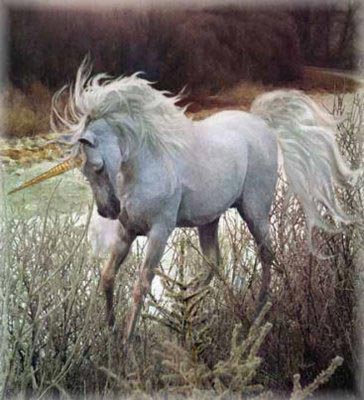 When you dive into the world of the equestrian art, you’ll find a nice mixture of both men and women evenly appreciating horses and all their great qualities. But head a little deeper, specifically into the realm of youth and suddenly you’ll see a marked difference in how the genders view their horses. Boys tend to look at them as cool animals, mostly as a vehicle to ride around the desert and charge into war. Girls, on the other hand, tend to dream big and consume their lives with high fantasy by associating horses with princesses, far away kingdoms, and especially variations on horses such as unicorns. The magical unicorn is one of those perfect fantasy creatures, but just why is it so popular? And could one ever really exist?
When you dive into the world of the equestrian art, you’ll find a nice mixture of both men and women evenly appreciating horses and all their great qualities. But head a little deeper, specifically into the realm of youth and suddenly you’ll see a marked difference in how the genders view their horses. Boys tend to look at them as cool animals, mostly as a vehicle to ride around the desert and charge into war. Girls, on the other hand, tend to dream big and consume their lives with high fantasy by associating horses with princesses, far away kingdoms, and especially variations on horses such as unicorns. The magical unicorn is one of those perfect fantasy creatures, but just why is it so popular? And could one ever really exist?
The image of the unicorn is classic and iconic, generally taking the appearance of a white mare with a single, spiral horn sticking straight out from its forehead. It shouldn’t be confused with a Pegasus which is a horse with wings, or a unipeg, which is a Pegasus with a unicorn horn. Something about this simple concept- that of adding a horn to a horse- seems to resonate not just with little girls the world over, but with a much wider array of people throughout the ages, a fact we can be sure of thanks to history books showing us that the unicorn myth dates back thousands of years.
Actually, we don’t even know for sure when and where the notion of a unicorn first appeared as the Greeks incorporated them into their ancient records. Yes records, not their myths. They wrote of them in historical accounts, which just further perpetuates the idea that they could actually be real, or at least were at some point in history. Throughout the Middle Ages and in a lot of Scandinavian lore, unicorns were thought to be magical creatures capable of great magic and great healing, and horns were even found to supposedly “prove” such things.
These antique unicorn horns are most likely of narwhal decent as narwhals, a whale-like creature from the arctic that has one long tusk in the front of their face. Long ago, Vikings would take these tusks and sell them to traders, claiming they were from unicorns. And for some reason, mostly because there was no way for most people to prove this otherwise, the horns would sell for ten times their weight in gold. People really wanted to believe in unicorns!
Still, myths don’t happen without reason, not usually, so archeologists are constantly searching for the actual unicorns of legends, or rather their real-world analogs. Did they come from an ancient horse that actually had horns? Or from a more common animal that could have just appeared to be a unicorn? The trouble is, from a scientific standpoint, a unicorn is genetically impossible since horses just don’t grow horns, and no animal similar to a horse grows single horns in the middle of their head. Some are close, with two long straight horns that can appear to be one horn when viewed from the side, but those pitch back rather than stick forward. Horned animals tend to have cloven hooves, which means that any growth will split into two, so a horn just cannot appear in the center of a head.
This of course has not stopped people from both searching and dreaming, and why should it? Unicorns are cool, simple as that. Whether they’re real or not doesn’t matter since they’re so popular already in stories the world over. Everyone loves a unicorn, so why say anything bad about them now?
Related Articles
Famous Horses In Fiction
Five Famous Warhorses
5 Sports Horses Participate In
Horses in Warfare
Non-Horses
Practical Work Horses
How to Tell Your Horse's Age By Their Teeth
How Smart Are Horses?
Gallopers
Why Are Unicorns So Popular and Could They Really Exist?
The Role of Horses in Human Advancement